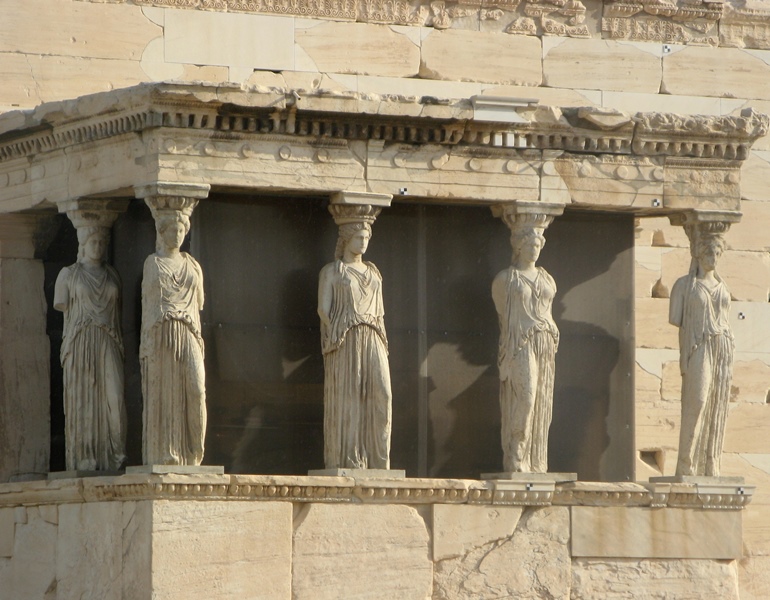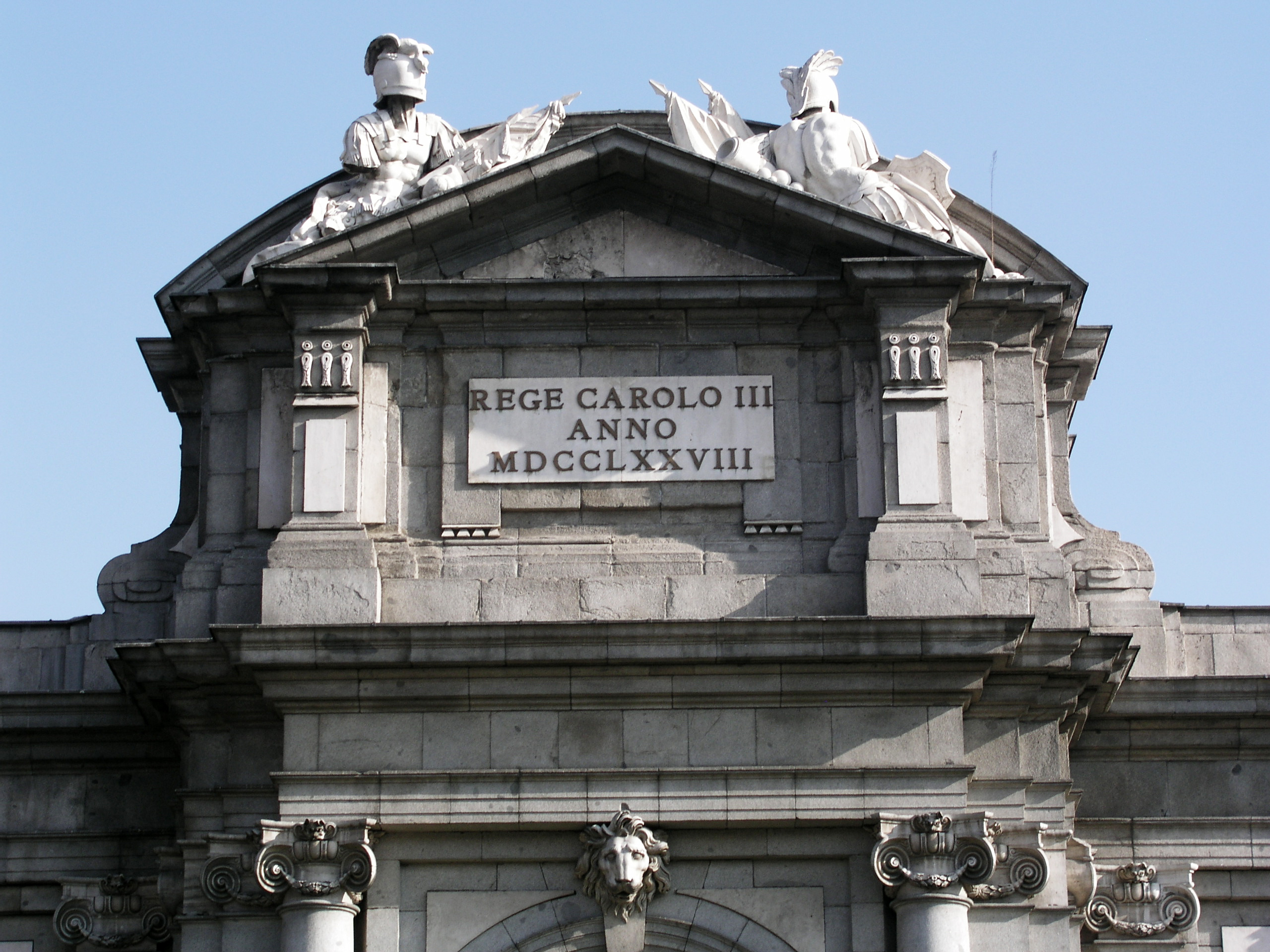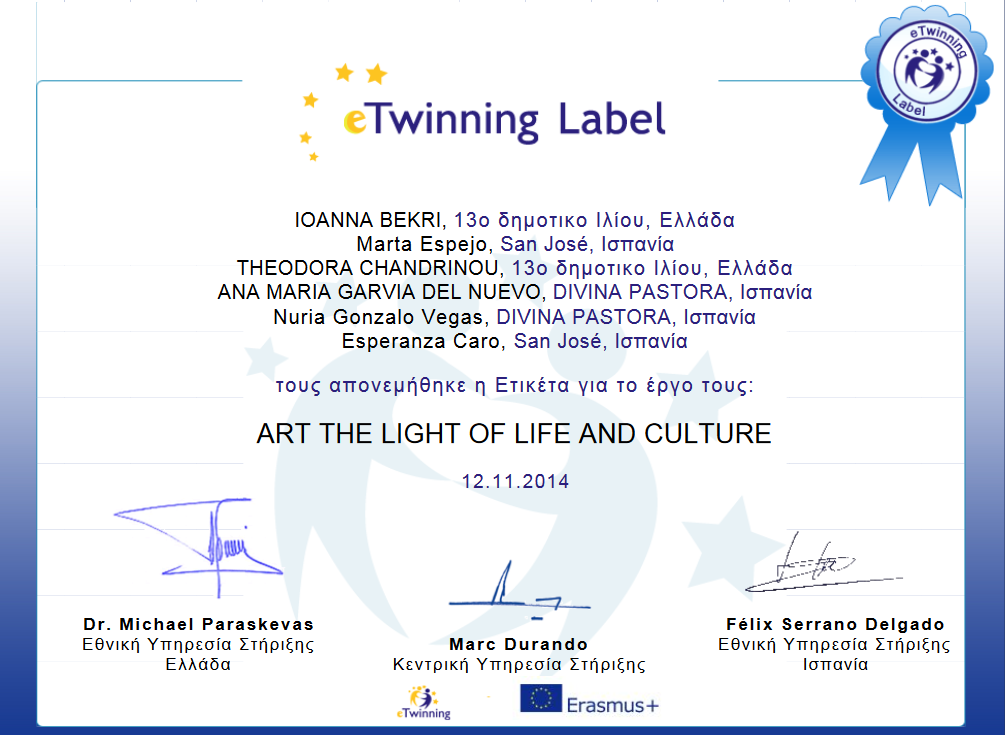

Γεια σας φίλοι μας!!!
!Hola amigos!!
Hello dear friends!!!
About the project
This project is for young students between eight to twelve years old. After the project completion we are going to present our feedback activities. Its aim is to help students meet different cultures, to make friends, to learn more about art and to realize how same and different people and countries are. Also to cultivate the students' life skills and their aesthetic criterion.
Aims
This project may create to the students the interest for different cultures. Moreover the students will find the joy of art through important monuments and acquire knowledge of their history. At last they will meet new friends from other countries and share knowledge.
Work process
This project is expected to be completed in the curricula. We will be in touch at least once a month. Students will find information, read, draw, play and write about a monument of their country. We are going to use different ICT tools , also. The methodology will be students-centered and group cooperative learning.
Expected results
Students will show their works to their schools so as to provide the love in art to the other students also. The exhibitions will be open to public.
We are going to use twin space platform and different ICT tools.
Feedback activities will help students to fulfill their knowledge.
Pedagogical Innovation and Creativity
The most important factor is the embedding of Fine Arts lesson in the Primary education, in the curricula.
The students have engaged in active learning throughout the project. We use group work cooperative learning system, ICT materials, project method and learning to learn. Presentations and experiential workshops, as seen in our Fine Arts practice are included.
Main goals for the participating members to be succeeded:
• Help children acquire knowledge about History, Geography, and Art Culture as a source of life and civilization and to love foreign languages.
• Increase the children’s interest and appreciation about Visual- Fine Arts, and Architecture, through the History of Art teaching.
• Cultivate the Aesthetic criterion and the aesthetic values of the pupils as well and also their observation and inspiration.
• Increase the interpersonal and intrapersonal children's relations.
• Offer ways of creative expression through Visual - Fine Arts.
• Help all members become able to communicate and make new friends.
• Learn more about art and other cultures, to realize that people and countries have both similarities and differences.
• Cultivate life skills through experiential learning and collaboration.
• Make use of Interaction on the educational practices. A highlighted point is the knowledge exchanging, in the educational community and the results sharing in public.
• Make the children understand and feel that they can share and exchange knowledge as they are part of a creative School society.
• Improve the childrens’ Emotional Intelligence.
• Promote the positive approach and the correct use of technology, computer programs and internet.
Use of Technology Contact among school partners
We are going to have many times in the week contact via internet with the Teachers partners for preparing, planning and evaluating the project steps. The students will share materials at least once a month. The use of different ICT tools such as: search engines, internet and different computer programs (painting – power point, word - PDF, audio-MP3, padlet, Google Earth and others) will help sharing and exchanging the materials among the students and teachers project members.
Other ICT tools that we are going to use for our best contact are: Blogs, uploads on the twin space platform and the use of forum & mail. Also, we are going to have skype contact. The teachers personal e-mails will be active and of course the classic post for sending- exchanging the works-creations and messages of collaboration among the children. Telephone contacts between the Art Teachers in Spanish language will be important and necessary for the fulfillment of the project.
Languages
We are going to use Greek, Spanish and English languages. All students and Teachers will have the opportunity to improve their English thanks to the project collaboration. Telephone contacts between the Art Teachers Theodora Chandrinou and Esperanza Caro in Spanish language will help to transmit the interest in foreign languages to the children.Greek students learn some simple spanish words and the same with spanish students.In our skype contact we used them.
******************************************************************************************
As a result, after all the project activities and practices applied, we wish also to share our evaluation concerning the:
Curricular integration
In the project we applied the cross-curricular approach principles. Through Art the students explore the world of Greek and Spanish history. Students exchanged through twin space platform their works and they used ICT tools and classic mail post for a better communication.
• Prior to the activities, the whole class was formed in small working groups.
• The pupils exchanged materials and informations about the monuments, Greek and Spanish ones that were going to be presented.
• We used Power Point presentations and Internet exploring, also photos printed. After, they were talking about what impressed them the most.
• The children made research for additional information on the monuments presented and homework was advised.
• The project broadened pupils' knowledge in history of art and on cultivating their Aesthetic skills.
• After searching the web for pictures and informations about various monuments, both in English, in Greek and Spanish languages, the students presented their works to the whole class and after to their partners through the twin space pages.
• Interaction and contact with the Spanish pupils was priority.
• After watching the exchanged presentations prepared by the Spanish and Greek students we talked about what impressed the pupils the most.
• They compared the foreign monuments attempting to find similarities and differences in the mentality of the two nations through Art in the centuries.
• Also we studied the geography and history from antiquity to modern times and we used among other tools Google Earth for that.
• Pupils from Greece and Spain were creative in all stages.
• They created sculptures, paintings and collage, group working and as individuals.
• All the participating Teachers assumed the role of the facilitator trying to inspire and motivate children, guiding and helping on the process from the beginning to the end.
